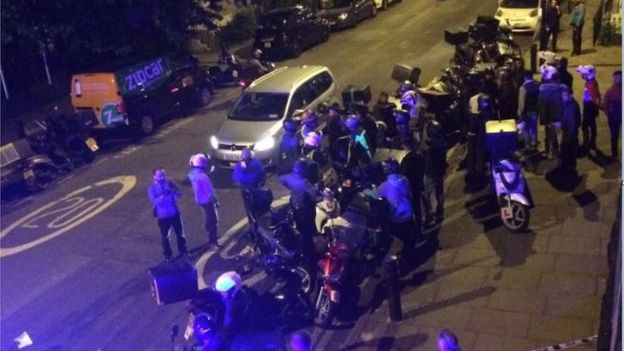London acid attacks
July 15, 2017 | Expert Insights

On 13th July 2017, London witnessed a series of acid attacks in a span of 70 minutes. First of the five attacks took place at 10:25 pm on Hackney Road where a 32-year-old man on moped was attacked by two male riders resulting in facial injuries. As per police reports five men were attacked resulting in one suffering from “life changing” facial injuries. The police suspect the attacks to be linked and have arrested a teenage male suspected to have caused grievous bodily harm and robbery.
Timeline of events
- 10:25pm, 32-year-old man on moped attacked by two male suspects on the Hackney Road junction who threw the acrid liquid on his face resulting in facial injuries.
- 10:50pm, two male suspects sprayed another victim with the acid on the Upper Street junction in Islington.
- 11.05pm, victim was attacked by two men on a moped on Shoreditch High Street who again threw the acid on his face.
- 11:18pm, man on Cazenove Road was attacked by two male suspects resulting in “life changing” facial injuries.
- 11:37pm, man stuck in traffic on Chatsworth Road was attacked by two male suspects who not only threw corrosive liquid on the victim but also stole his moped.
Analysis
Reports suggest that, in 2016 there were 455 crimes in London where a corrosive substance was used or threatened to be used. In June 2017, model Resham Khan and her cousin were attacked in Beckton, east London. This resulted in in Ms. Resham launching an appeal from her hospital bed for a “zero-tolerance stance” on acid attacks. The petition on Change.org demands that the UK Parliament issue license the purchase of acids. Around 370,000 people have signed the said petition. Home Office minister Sarah Newton issued statement that the government was considering tighter controls on some chemicals in response to the acid attacks in East London and elsewhere. She added that regulation of the same would be difficult.
Assessment
Our assessment is that crime rates involving corrosive chemicals in London is constantly rising. The Metropolitan Police Service has recorded 119 such attacks in 2017. This clearly shows the ease of accessing these chemicals. Strict licensing of chemical purchase could mitigate the threat. But this cannot be considered as a permanent solution. The parliament needs to analyze the issue at hand and impose severe punishments to the offenders who commit such heinous acts.








Comments